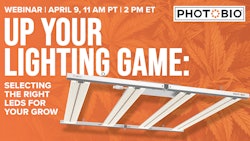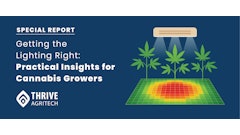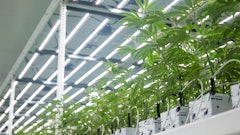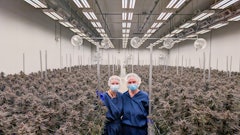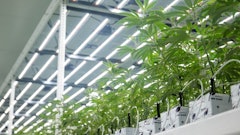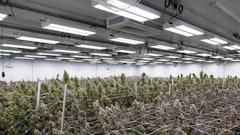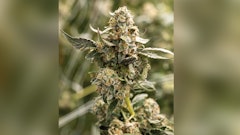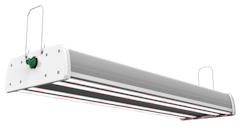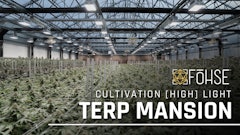
Constructing a cannabis cultivation facility is a costly endeavor. To remain competitive in an ever-evolving industry, building or upgrading indoor or greenhouse grows with the most cost-effective equipment is crucial. While affordability is often a barrier to investing in the latest lighting, environmental control and automation technology, utility rebates can offer potentially significant savings for operators who are willing to spend the time researching options and going beyond what’s available.
Increasingly, utility companies, especially those that are in large areas or are public, offer what are called prescriptive programs, or those that are standard and offer money toward purchasing more energy efficient equipment.
“Prescriptive programs will get you something at least, and it usually doesn’t require a whole lot of effort,” says Sam Milton, owner of Climate Resources Group. “They make it easy. The whole point is that it is very user friendly. Most operators, if there are able to get a few bucks from a prescriptive program, they will stop there.”
Incentives for horticultural lighting technology are some of the most common, as utility providers want to encourage use of light-emitting diodes (LEDs), which are more energy efficient than other fixtures.
But cannabis cultivation facilities are complex environments, and utility companies may not have a complete understanding of how specific environmental changes or equipment can save in energy use over time, Milton says. That’s where custom programs, which require operators to demonstrate savings and must be verified before being awarded, can be useful.
“Most cannabis growing operations are highly sophisticated, dynamic facilities with a lot of moving parts happening together, with a range of technologies that are constantly evolving and improving,” Milton says. “Every prescriptive program is developed over time, once they have a critical mass of products they can compare and take lessons from. Those complex interactive effects aren’t often captured in those prescriptive programs.”
And the energy efficiency world is also relatively new, says Dylan Collins, CEO of Green Rebates, so more information is needed to understand the full picture of how multiple equipment and technology choices in a facility can collectively reduce energy use.
“You have these two emerging industries, and then you have the cannabis leg of the horticulture industry, which is even newer. And so there's just a lot of education that still needs to be done on both sides of the fence,” Collins says.
Because of this, Collins and Milton say there are potentially missed opportunities when it comes to rebates.
Here, they share some tips for navigating utility rebates, and what to expect.
1. Identify your utility provider and investigate programs available.
The scope of utility rebates available ranges widely by state and also municipality, as they are typically state-mandated programs offered through individual companies.
“The first step in that process is literally just identifying who your utility provider is and then connecting with a resource that can tell you if a program exists,” Collins said. “And then from there, how broad is that program and what all could be covered with what you're doing?”
Colorado and Michigan have some of the most expansive and generous programs, Collins says, while options can be extremely limited in states like Florida.
The first person you speak to might not know what incentives are available or provide the right information, Milton says. Don’t be discouraged if they say no programs are available.
“Don’t take no for an answer. People will call the main number on the utility company’s homepage, and the person on the phone has no idea what these programs are,” Milton said. “That’s why you need to have tenacity … to fully take advantage of the programs.”
Milton suggests digging further to identify the person or department in charge of utility rebates. Ask vendor partners for advice on what may be available in a specific state, but know that the onus is on the operator to fully understand, and push for, what’s possible.
2. Determine who is overseeing the rebate process.
With employees at cannabis companies often already wearing many hats, another factor to determine is if you want someone on your team to be responsible for investigating and filling out the necessary paperwork to get a rebate, or if you want to hire an outside consultant.
The process from application to receiving a rebate typically takes about three months, and potentially longer with custom rebates, which can hold up already incredibly tight construction and expansion timelines. All of these factors are important, so Milton recommends starting as early as possible during the planning and design phases.
3. Go beyond prescriptive offerings and consider custom possibilities.
“One mistake people often make, if they are building out a new facility, they might apply for only an incentive for their LED purchase,” Milton said. “Those are straight forward. LED vendors know their way around programs, will submit paperwork, and it’s low-hanging fruit. But if a grower-applicant is able to stack other technologies on top of that, they can get a much bigger check.”
Milton said he has seen cultivators be successful in getting rebates for many other systems including HVAC-D, light deprivation curtains, environmental controls, greenhouses, chillers and more.
Collins echoed Milton’s sentiment, and said he’s seen rebates awarded for light deprivation curtains that have already been installed.
“I think the most underutilized opportunity in the industry right now is light dep and heat curtains in greenhouses,” Collins says. “You never know what money you're leaving on the table until you find out.”
Another more recent development in energy incentives is rebates for dehumidifiers for flower and drying rooms, Collins says.
“Incentives exist to incentivize people to choose the more expensive, more efficient option and to help pay for the cost involved in doing that. Dehumidifiers are a whole new realm that really have only been incentivized recently, in the last year or two,” he said. “I've talked to programs that haven't been or weren't offering dehumidifier rebates that are now starting to.
“Every program is different. There are some that will only cover a few hundred dollars of a dehumidifier, [for example], but there's others like in Oregon, where depending on the installation of labor costs, the actual equipment cost might be covered a hundred percent.”
Another rebate opportunity that Collins discovered recently was in the extraction process, he says.
“The efficiency gains were in the solvent recovery portion of the process,” he says. “We worked with a company that has a process that severely cuts down the processing time and the energy required to recover that solvent, and we can demonstrate those savings. And when we're able to do that, we can get an incentive.”
Even when systems are not fully covered, Milton says if there are savings, especially those in the 50% to 70% range, that can be significant when working on a multimillion-dollar project.
“You have to have awareness these programs even exist, and it’s worth doing the hard work to get there,” Milton says.
4. Demonstrate savings from individual and combined systems.
Milton says the key to getting the most lucrative incentives is proving data to the utility showing what the savings are.
“The utility is never going to give you the benefit of the doubt,” he says.
Milton recommends exploring using 3D energy modeling software, which provides operators the ability to measure indoor horticulture facilities and key cultivation metrics like humidity, temperature, latent heat load, vapor pressure deficit (VPD) and more.
“This software gives you a more robust picture of what’s happening in a facility,” Milton says. “And it provides the utility the information that they need to have the conversation that this project is delivering savings beyond what their initial assumptions may be.”
5. Factor in how rebate and equipment timelines will impact the overall project.
One common barrier companies report as a hurdle to taking advantage of incentives is timing, Collins says.
“The most common challenge is the process, the timeline involved in getting a project pre-approved, because in a lot of programs, you have to get pre-approval before you even purchase equipment,” he says. “As you could understand, with a grow operation, delays in installing or switching anything can lead directly to significant losses. So hypothetically, if a grower is setting up a new building and they want to get LEDs, but they need the rebate, then they have to wait for that approval. And if that approval isn't done by the time they need to have lights, they're losing money.”
The average timeline from submitting a rebate to getting a check is about three months, Collins says, so it’s important to factor that in when considering rebates.
“There's a lot of different variables at play there. Some of that comes down to how quickly the customers can actually get the equipment installed and then the shipping timeline and whatnot,” Collins says.












